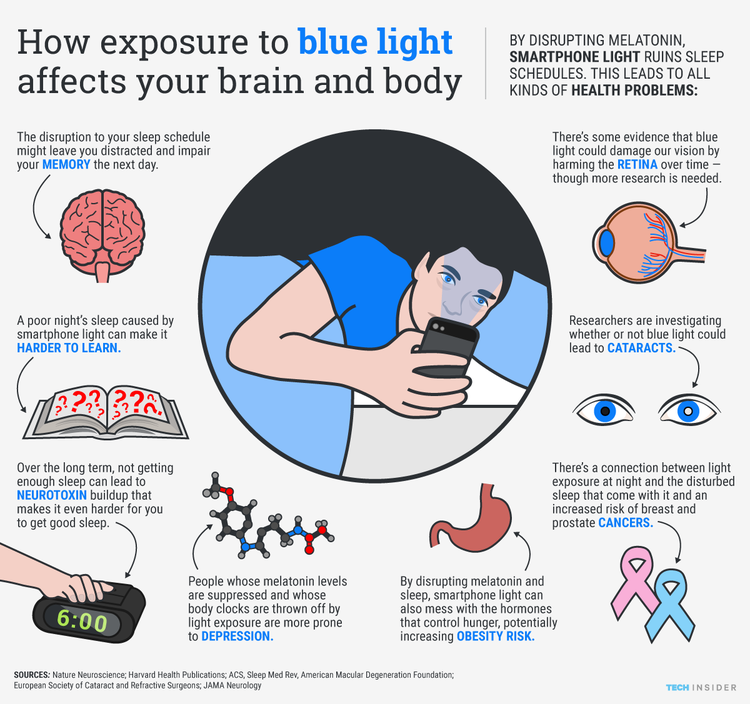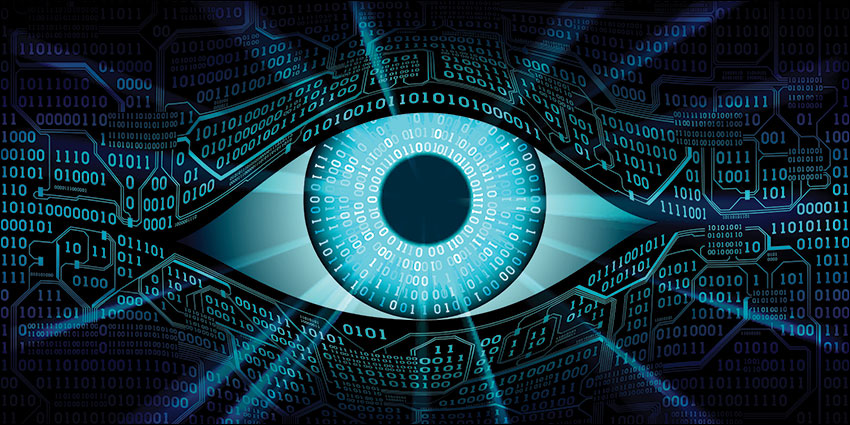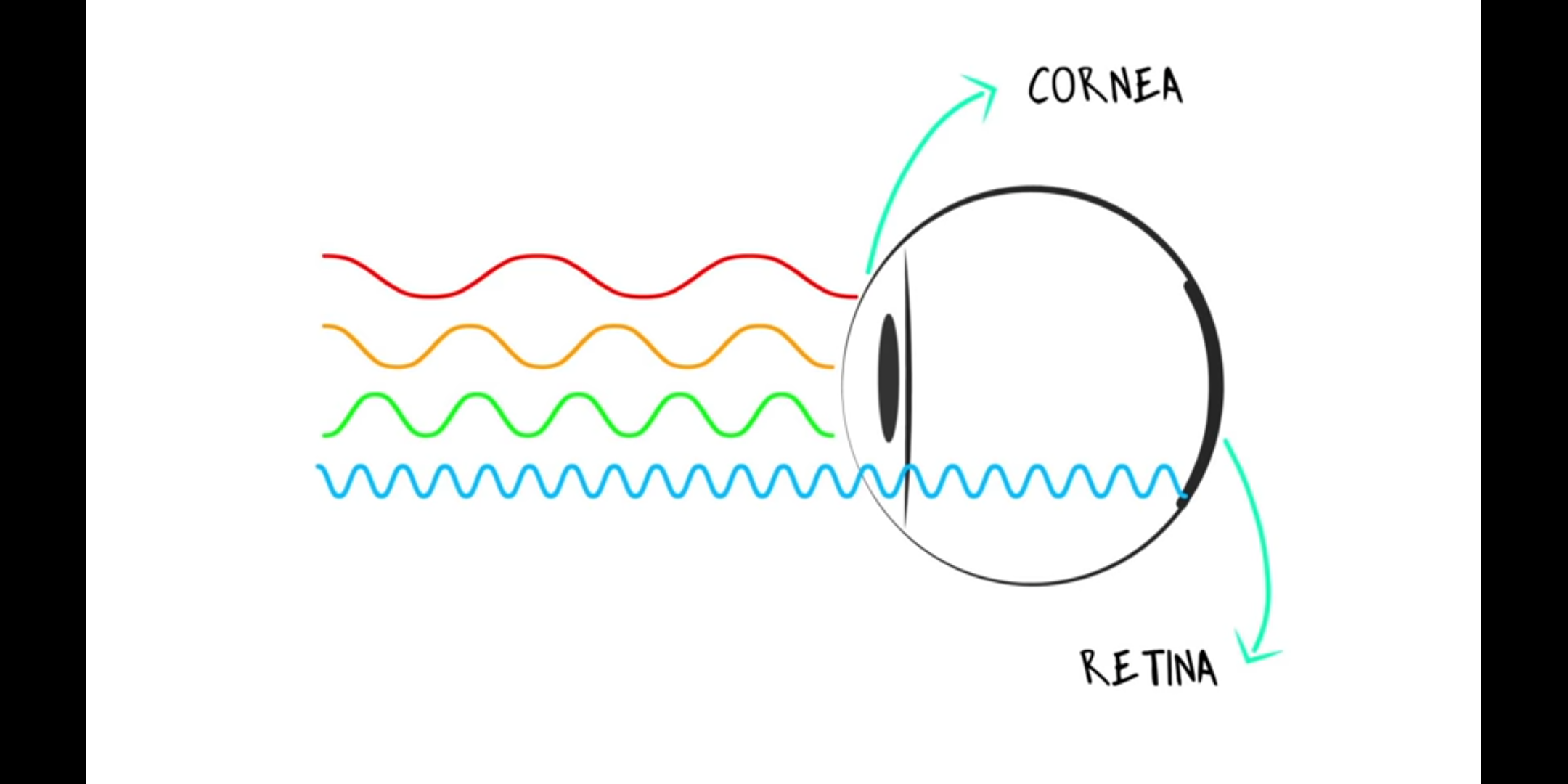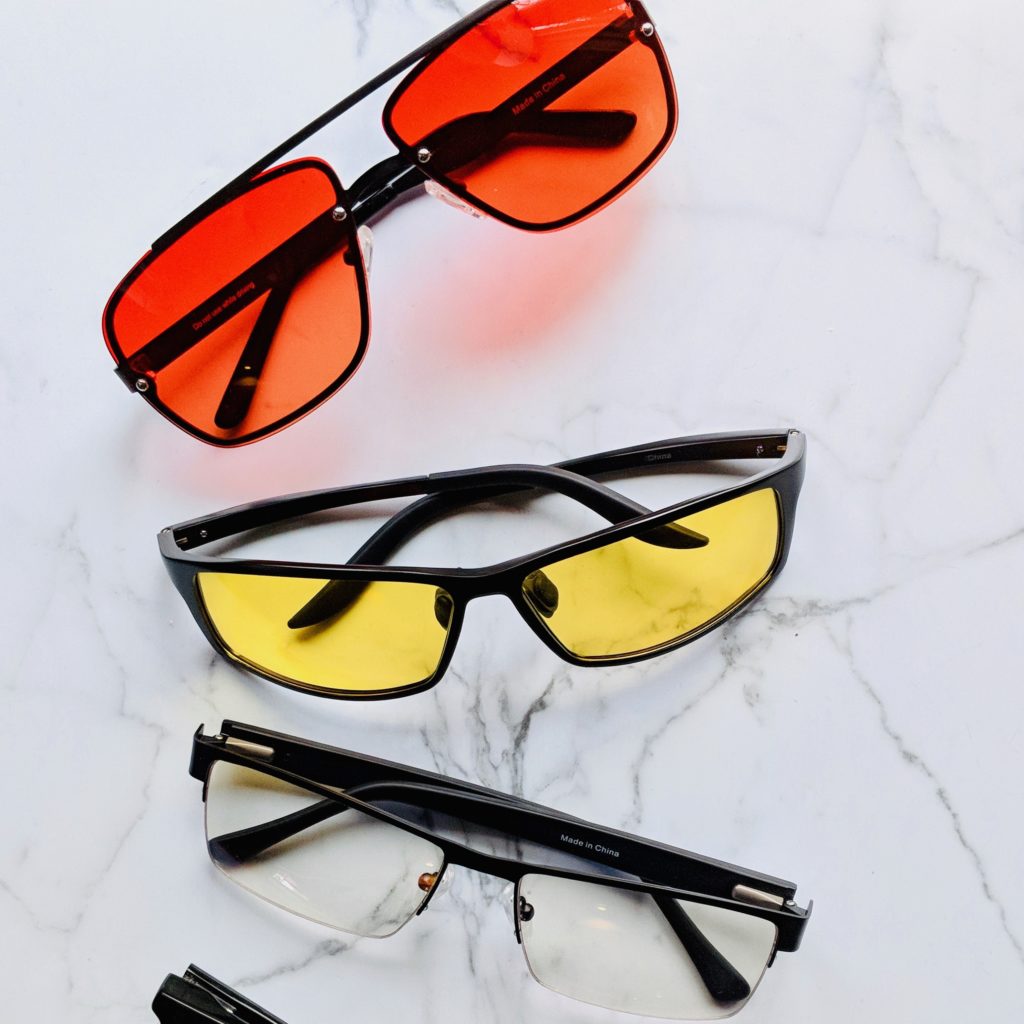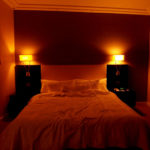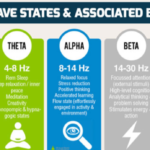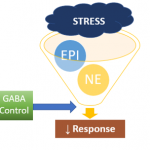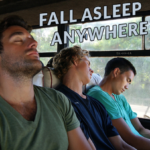Switch your display setting to night mode, for more relaxation in the evening…
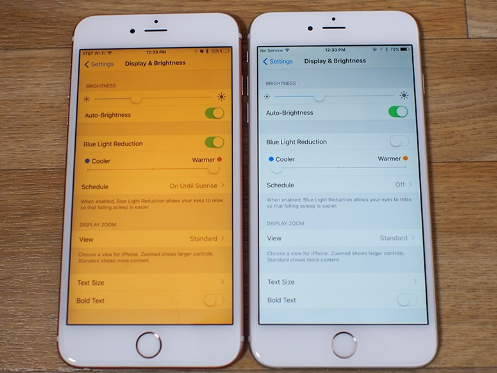
We look at our mobile devices several times a day— some more than others…
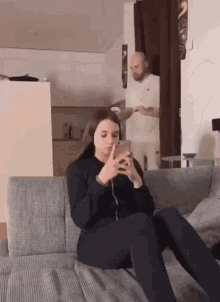
You’ve got papers to type up, research to do, or you’re just mindlessly scrolling through social media.
If you stare into your phone screen for long enough, you can end up with a headache, nausea, and/or sleep issues.
This article will go deeper into how our electronics affect our sleep and what we can do about it.
How your screentime can affect sleep quality and it’s duration.
There is a blue light that is emitted from the screens of our smartphones, tablets, TVs, and laptops.
When blue light hits the back of your eye, it stimulates the brain waves that promote an “awake” state of mind.
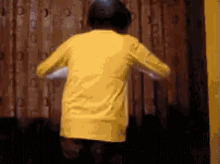
This can make it very difficult to fall and stay asleep after using your electronic device.
How can blue light have such a huge affect on my sleep?!
“Blue light has been found, in multiple studies, to suppress the secretion of melatonin…
Which is what regulates our circadian rhythm and allows us to have normal sleep schedules.
When circadian rhythms are altered, it can increase blood sugar levels and place people in a pre-diabetic state.
Altered circadian rhythms also reduce leptin. Leptin is a hormone that lets people feel full after a meal– so with reduced leptin, most people eat more in order to feel satisfied.
Blue light, especially at night, is one of the reasons why people don’t get enough sleep.
Lack of sleep increases risk of depression, along with diabetes and cardiovascular problems.”—source.
Blue light is one of the many colors that light comes in.
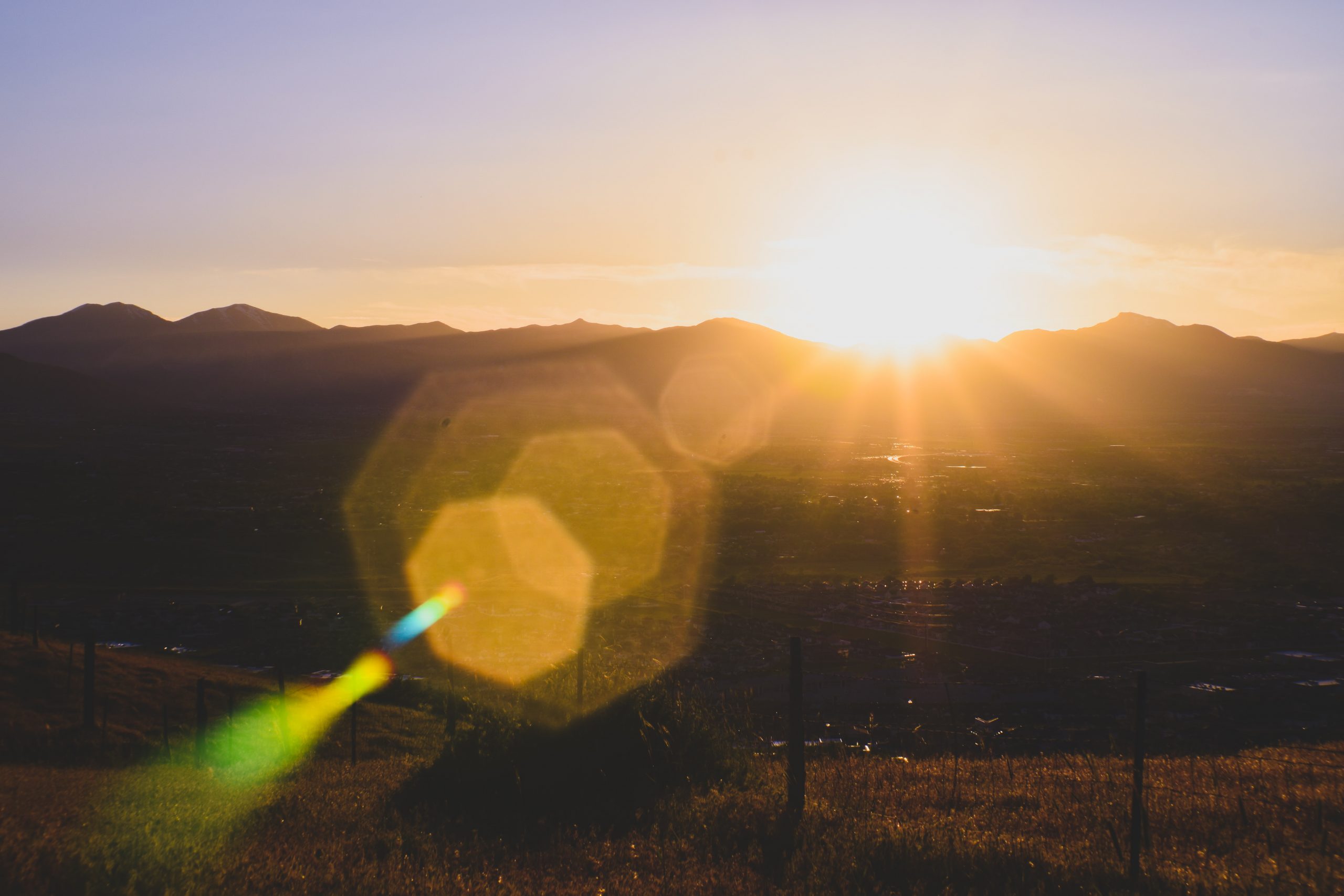
You can think of blue light as an energy bolt that vibrates faster than any of the other colors of the rainbow.
Blue light can easily shine through your eyeball, and basically fry up your retina.
Here’s a video that explains it even better… ⬇️
The other video down below, will list all of the reasons why you should end screentime around 9-10pm every night.⬇️⬇️⬇️
Ok so we know that blue light is bad for sleep, but what can we do about it?!
There are several ways that you can protect your retinas, and promote better sleep…
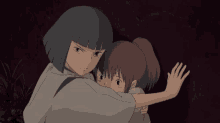
Here are some of your options⬇️:
- Turn night shift mode on, for all of your devices
- Get a blue light filter screen protector (these can be applied to any device)
- Wear blue light blocking glasses
- Download a blue light blocking app
Night shift mode:
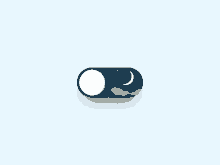
Most electronic devices have a “Night Shift” feature now.
This is super helpful because it comes with your phone, tablet, TV, or laptop—all you have to do is go into settings and turn it on.
To enable the feature on an iPhone:
- Go to Settings Display > Brightness
- Then schedule “Night Shift”
for the hours you will be winding down for bed (and sleeping).
To enable the feature on an Android:
- Go to settings
- Click display > Night Light
- You can now choose how intense you want the night light (more of an amber colored display or less).
This blue light blocking mode, tells your device to move the color spectrum from cooler (blue), to warmer (yellow/amber).
The warmer colors limit your exposure, to the sleep disturbing blue light, at night.
You can schedule when you want the night light to turn off, aka when you wake up for the day…🌞
And you can set up a designated time for the Night Light to turn on every evening too.🌜
Blue light filter screen protector:
This blogger shares her experience with blue light protection products— she says her favorite thing to use is a Blue Light Screen Filter:
“I now use anti-blue light screen filters that simply slot over each computer screen and block the most harmful portion of the blue light spectrum (420nm – 460nm, with 450nm ± 10nm as the peak point).
This is the range that has the most dramatic impact on vision health and also ensures that image colours remain true instead of turning a hue of orange.
There is mounting evidence, too, that blue light exposure can exacerbate photo-aging, wrinkles, skin laxity and hyperpigmentation, so covering the entire screen with a filter gives protection for skin as well as eyes.
The anti-blue light filters I use are available direct from Fiara in Australia, have been rigorously tested and are very reasonably priced. The range also includes filters for iPhones, iPads, MacBooks, laptops and LED TVs”.—SOURCE.
This doctor gives a review on Ocushield’s Anti blue light screen protectors.
Check out how they can be used for blue light elimination and use the discount code at the end of the video if you’re interested!💯
Wear blue light blocking glasses🕶️
Blue light blocking glasses come in many different styles and lense colors.
You can decide whether you want your lenses color to be clear, yellow, orange, or red.
Each specific color affects how much “junk light” your glasses are blocking from your retinas/eyes. are significant as they affect how much junk light your glasses are actually blocking.
The term “Junk Light” refers to the rays of light that are blue, green, and violet.
These colors in light, are harmful to your eyes and they are found in florescent, grocery store lights, LCD screens, and more.
So which color lense should I pick?
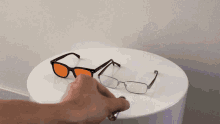
That depends on what you want for your eyes…
- Clear lenses block a maximum of 40% of blue light.
- Yellow lenses block a maximum of 75% of blue light.
- Orange lenses block 98% of blue light.
- Red lenses can block up to 100% of blue, green and violet light.
Personally, I would probably pick the red lenses because they reduce the most eye strain, by protecting your from all harmful UV rays of light, all day everyday.
Here’s the same doctor sharing his knowledge on blue light blocking glasses.
I’ll leave you with a few more tips and if you have anymore questions feel free to message us through the live chat option (PLEASE remember to leave your email so we can respond in a timely manner!).
Blue light protection tips for the road ahead:
- Take eye vitamins/eye supplements (Check out EyePromise by clicking here).
- Try reducing your screen time as much as possible—we know it can be tough with work and school being mostly online these days…
But any free time you have, try going outside or reading a book instead for an hour to give your eyes a blue light break.
